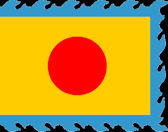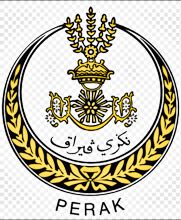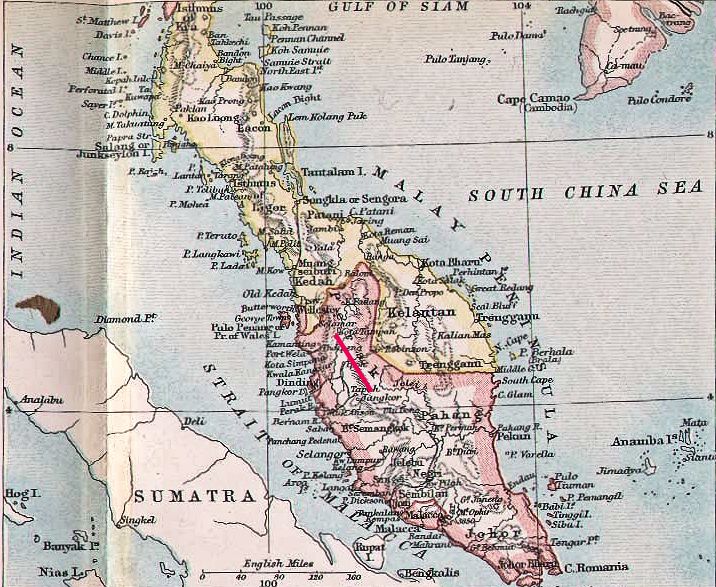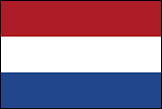

Zitierweise / cite as:
Payer, Alois <1944 - >: Chronik Thailands = กาลานุกรมสยามประเทศไทย. -- Chronik 1806 (Rama I.). -- Fassung vom 2015-10-12. -- URL: http://www.payer.de/thailandchronik/chronik1806.htm
Erstmals publiziert: 2013-06-28
Überarbeitungen: 2015-10-12 [Ergänzungen] ; 2015-07-02 [Ergänzungen] ; 2015-05-10 [Teilung des Kapitels] ; 2015-05-03 [Ergänzungen] ; 2015-04-18 [Ergänzungen] ; 2015-03-26 [Ergänzungen] ; 2015-03-13 [Ergänzungen] ; 2015-03-03 [Ergänzungen] ; 2015-02-17 [Ergänzungen] ; 2015-01-22 [Ergänzungen] ; 2014-12-22 [Ergänzungen] ; 2014-11-25 [Ergänzungen] ; 2014-11-10 [Ergänzungen] ; 2014-10-20 [Ergänzungen] ; 2014-08-18 [Ergänzungen] ; 2014-01-13 [Ergänzungen] ; 2013-10-03 [Ergänzungen] ; 2013-09-28 [Ergänzungen] ; 2013-09-25 [Ergänzungen] ; 2013-09-18 [Ergänzungen] ; 2013-09-04 [Ergänzungen] ; 2013-08-29 [Ergänzungen] ; 2013-08-26 [Ergänzungen] ; 2013-08-23 [Ergänzungen] ; 2013-08-20 [Ergänzungen] ; 2013-08-16 [Ergänzungen] ; 2013-07-06 [Ergänzungen] ; 2013-07-01 [Ergänzungen] ; 2013-06-30 [Ergänzungen]
©opyright: Dieser Text steht der Allgemeinheit zur Verfügung. Eine Verwertung in Publikationen, die über übliche Zitate hinausgeht, bedarf der ausdrücklichen Genehmigung des Herausgebers.
Dieser Text ist Teil der Abteilung
Thailand von Tüpfli's Global Village
Library
ช้างตายทั้งตัวเอาใบบัวปิดไม่มิด
|
Gewidmet meiner lieben Frau
Margarete Payer die seit unserem ersten Besuch in Thailand 1974 mit mir die Liebe zu den und die Sorge um die Bewohner Thailands teilt. |
1806 - 1809

Isarasundhorn (อีศวรสุนทร, 1767 - 1824), der spätere Rama II., ist Front Palace (Uparaj) (กรมพระราชวังบวรสถานมงคล)
1806 - 1834

Udayarājādhirāja (พระอุไทยราชาธิราช = Ang Chan - นักองค์จัน, 1791 - 1834) wird von Rama I. in Bangkok zum König von Kambodscha geweiht.
1806

Anuvong (ສົມເດັຈພຣະເຈົ້າອານຸວົງສ໌ - เจ้าอนุวงศ์, 1767 - 1829), König von Vientiane (ວຽງຈັນ) pilgert auf dem Mekong nach Wat Phra That Phanom (วัดพระธาตุพนม) und lässt den Chedi (เจดีย์) restaurieren, in dem sich ein Schlüsselbein Buddhas befinden soll. Anuvong pilgert auch 18067, 1812 und 1813 nach That Phanom.
Abb.: Lage von Vientiane (ວຽງຈັນ) und Wat Phra That Phanom (วัดพระธาตุพนม)
[Bildquelle: OpenStreetMap. -- Creative Commons Lizenz (Namensnennung, share alike)]
1806


Siam sendet eine Gesandtschaft auf dem Landweg über Vientiane (ວຽງຈັນ) nach Hué [化/Huế]. Dadurch sollen die pro-siamesischen Kräfte in Vientiane gestärkt werden.
Abb.: Lage von Vientiane (ວຽງຈັນ) und Hué [化/Huế]
1806/1807
Das Flusswasser ist unüblich dunkel und es gibt eine große Menge Soi-Fische (สร้อย): สร้อยบัว/ปลาบัว (Labeo dyocheilus McClelland, 1839) oder สร้อยหลอด/ปลากาแดง (Epalzeorhynchos frenatum Fowler, 1934) oder สร้อยอุก (Labiobarbus siamensis Sauvage 1881)
Abb.: สร้อยหลอด/ปลากาแดง (Epalzeorhynchos frenatum Fowler, 1934)
[Bildquelle: Drachenschwertträger36 / Wikimedia. -- Creative Commons Lizenz (Namensnennung, share alike)]
1806
Der Dichter Sunthon Phu (สุนทรภู่, 1786 - 1855) besucht den Heimatort seines Vaters in der Provinz Rayong. Darüber schreibt er 1807 das Nirat Mueang Klaeng (นิราศเมืองแกลง).
Abb.: Lage von Mueang Klaeng (เมืองแกลง)
[Bildquelle: OpenStreetMap. -- Creative Commons Lizenz (Namensnennung, share alike)]
"In Nirat Mueang Klaeng (Journey to Klaeng [นิราศเมืองแกลง]), he relates how spirit mediums diagnosed that the poet had fallen ill because he was under attack by the guardian spirit of a mountain, where the poet had picked a flower without first informing the spirit. Sunthon Phu [สุนทรภู่, 1786 - 1855] knew that he had caught a cold and would soon get better. He had no faith in spirit mediumship and so accused the medium of lying. He called the medium “thao mot” (literally, Mr. Spirit Medium), a phrase that positions the medium as an ordinary villager. The medium’s power to communicate with spirits meant very little to him because he was certain that the medium was lying." [Quelle: Pattana Kitiarsa [พัฒนา กิติอาษา] <1968-2013>: Mediums, monks, and amulets : Thai popular Buddhism today. -- Chiang Mai : Silkworm, [2012]. -- 170 S. : Ill ; 21 cm. -- ISBN 9786162150494. -- S. 135.]
1806

König Bodawpaya (ဘိုးတော်ဘုရား, 1745 - 1819) von Burma, fühlt sich zum Cakravartin (Weltenherrscher) berufen. Der Missionar Vincentius Sangermano (1758-1819) schreibt:
[His goals were to] "Destroy ... the Siamese, then turn his arms against the emperor of China and make him his tributary, thence he would bend his course towards the west, possess himself of the British colonies, attack the great Mogul in his empire [India] and make himself master of the whole Jambuwipa." "He legitimized his attack to the south by stating that Burmese trade "has been repeatedly interrupted by the pirates of Tullebong [Ko Libong, off Trang] [เกาะลิบง - ตรัง], Pulo Sumawa [Ko Surin?] [เกาะสุรินทร์] and Taun Lantar [Ko Lanta] [เกาะลันตา]. These places were inhabited by Chinese and Malay robbers who have been stimulated to acts of depredation by the Siamese Chief of Junk-ceylon [Phuket - ภูเก็ต] ... it pleases him [the Burmese king] to issue the command for the destruction of the kingdom of Siam for thus sheltering thieves and robbers."
[Zitiert in: Mackay, Colin <1936 - >: A history of Phuket and the surrounding region. -- Bangkok : White Lotus, 2013. -- 438 S. : Ill. ; 25 cm. -- ISBN 978-974-480-195-1. -- S. 231]
Abb.: Lage von Koh Libong (เกาะลิบง)
[Bildquelle: OpenStreetMap. -- Creative Commons Lizenz (Namensnennung, share alike)]
Abb.: Lage von Koh Surin (เกาะสุรินทร์)
[Bildquelle: OpenStreetMap. -- Creative Commons Lizenz (Namensnennung, share alike)]
Abb.: Lage von Ko Lanta (เกาะลันตา)
[Bildquelle: OpenStreetMap. -- Creative Commons Lizenz (Namensnennung, share alike)]
1806 - 1825

Sultan Abdul Malik Mansur Shah Ibni Almarhum Sultan Ahmaddin Shah ist Sultan von Perak (ڨيرق)

Abb.: Lage von Perak (ڨيرق)
[Bildquelle: Constables Hand Atlas of India, 1893. -- Pl. 59]
1806

London: Eröffnung der neuen East India Docks
Abb.: Lage der East India Docks
[Bildquelle: OpenStreetMap. -- Creative Commons Lizenz (Namensnennung, share alike)]
Abb.: East India Docks, ab 1806
[Bildquelle: Wikipedia. -- Public domain]
Abb.: East India Docks 1902-01-01
[Bildquelle: Wikipedia. -- Public domain]
1806
Der deutsche Uhrmacher Moritz Friedrich Illig (1777 - 1845) erfindet die Leimung des Papiers in der Masse mittels Harz und Aluminiumsulfat ("Alaun"). Dies in Verbindung mit dem 1844 erfundenen Holzschliff zur Papierherstellung erweist sich im Druckwesen Siams als Katastrophe: Holzschliffpapier in Verbindung mit Aluminumsulfat-Leimung vergilbt nicht nur, sondern zersetzt sich unter Luftfeuchtigkeit, sodass solche Druckprodukte buchstäblich zerbröseln (Papierfraß).
Abb.: Säurefraß an Papier: Reste eines thailändischen Pali-Buchs von 1920: das Buch zerbröselt beim Anfassen
[Bildquelle: A. Payer, 2013. -- Public domain]
"Seit Mitte des 19. Jhs. ist Ausgangsmaterial der Papierherstellung Zellstoff, der aus Holz gewonnen wird. Die seit dieser Zeit maschinell hergestellten Papiere tragen jedoch den Keim der Selbstzerstörung in sich. Die endogenen Zerstörungsursachen sind einmal die ... Zugabe von Alaun oder Aluminiumsulfat, zum anderen die holzhaltigen Fasern, die ... der Papiermasse beigefügt sind. Beide Faktoren sind je für sich allein genommen bereits säurebildend und zerstören damit die Kettenmoleküle der Zellulose, die für die Festigkeit des Papiers sorgen. Das Aluminiumsulfat bildet im Lauf der Zeit die zerstörerische Schwefelsäure. Die Ligninkomponenten des Holzschliffs bilden bei ihrem zwangsläufigen Abbau organische Säuren und tragen so durch Absenkung des pH-Wertes zu einer Beschleunigung des Papierzerfalls bei. Die Verbindung von Säure und Holzschliff kumuliert die endogenen Schadenskräfte. In einem komplexen chemischen Vorgang beschleunigen sich gegenseitig begünstigende Vorgänge der Oxydation, der Hydrolyse und der Autooxydation den Alterungs- und Zerfallsprozess." [Quelle: Bund-Länder-Arbeitsgruppe Papierzerfall: Bericht über Ursachen, Ausmaß, Wirkungen und Folgen des Papierzerfalls im Bibliotheks-, Archiv- und Verwaltungsbereich sowie Gegenmaßnahmen und Empfehlungen : vom 15. Juni 1992. -- Berlin : Deutsches Bibliotheksinstitut, 1992. -- ISBN 3-87068-430-5. -- S. 6.]
1806-05-26

Die von Frankreich abhängige Batavische Republik (Bataafse Republiek) wird auf Befehl Napoleons ins Königreich Holland (Koninkrijk Holland) umgewandelt. König wird Napoleons Bruder Louis Bonaparte. Die holländischen Besitzungen in Südostasien bleiben unter britischer Treuhandschaft.
Abb.: Königreich Holland 1806 - 1810
[Bildquelle: Red4tribe / Wikimedia. -- GNU FDLicense]
1806-11-21


Napoleon I. verkündet die Kontinentalsperre, die Wirtschaftsblockade des europäischen Kontinents gegen Großbritannien.
Abb.: Zollkontrolle während der Kontinentalsperre
[Bildquelle: Sammelbild Fritz Homann AG, Margarinewerke]
1806-12-20

Tod von Chaofa Krom Phra Anurak Devesh Krom Phra Rajawang Boworn Sathan Phimuk (เจ้าฟ้ากรมพระอนุรักษ์เทเวศร์ กรมพระราชวังบวรสถานภิมุข, 1746 - 1806).
Abb.: Chaofa Krom Phra Anurak Devesh Krom Phra Rajawang Boworn Sathan Phimuk (เจ้าฟ้ากรมพระอนุรักษ์เทเวศร์ กรมพระราชวังบวรสถานภิมุข)
[Bildquelle: th.Wikipedia. -- Fair use]
"Chaofa Krom Phra Anurak Devesh Krom Phra Rajawang Boworn Sathan Phimuk (Thai: เจ้าฟ้ากรมพระอนุรักษ์เทเวศร์ กรมพระราชวังบวรสถานภิมุข) (28 March 1746 - 20 December 1806) was a Siamese Prince and military leader. A nephew of King Buddha Yodfa Chulaloke (Rama I) the founder of the Chakri Dynasty, he was appointed Rear Palace (วังหลัง) or the Deputy Vice King of Siam. Becoming the only person to hold that title during the Rattanakosin Kingdom. Life
Thong-In (ทองอิน) was born on the 28 March 1746 to an Ayutthayan aristocrat Phra Intraraksa (Seam) (พระอินทรรักษา - เสม) and Sa (สา, later Princess Sister Thepsuthavadi - สมเด็จพระเจ้าพี่นางเธอ เจ้าฟ้ากรมพระเทพสุดาวดี; the eldest child of Thongdee (ทองดี) and Daoreung). Sa was also the elder sister of Thong Duang, later Chao Phraya Chakri and in 1782 King Buddha Yodfa Chulaloke. Thong-In was the eldest child and has two younger brothers and a sister.
For a time Thong-In served in the Army under King Taksin (สมเด็จพระเจ้าตากสินมหาราช, 1734 - 1782) of Thonburi as Luang Ritnaiwair (หลวงฤทธิ์นายเวร). In 1780 he was raised to the rank of Phraya Suriyaphai (พระยาสุริยอภัย) and was appointed governor of Nakhon Ratchasima นครราชสีมา).
When his uncle ascended to the throne as King of the new Rattanakosin Kingdom in 1782, he elevated his nephew to the rank of Chaofa (เจ้าฟ้า, most senior rank of Prince). Soon he was appointed to the title of Krom Phra Rajawang Boworn Sathan Phimuk and Rear Palace or Deputy Vice King (Deputy Uparaja), this meant he was essentially the third most powerful individual in the Kingdom. When the new capital was built at Bangkok Prince Anurak Devesh built his residence (วังหลัง - Wang Lang) back in Thonburi (ธนบุรี), directly opposite the Front Palace (วังหน้า), today the site is now occupied by the Siriraj Hospital (ศิริราชพยาบาล).
After becoming the Rear Palace he assisted King Rama I in his fight against King Bodawpaya (ဘိုးတော်ဘုရား) of Burma in 1785 during the Nine Armies War (สงครามเก้าทัพ). During the conflict he personally accompanied the King to recapture the city of Phitsanulok (พิษณุโลก) from the Burmese.
DeathAnurak Devesh died on the 20 December 1806 at the age of 60. After his death King Rama I decided not to appoint anyone to succeed him as Rear Palace and left the office vacant, the tradition was carried by subsequent kings until the official abolishment of the title in 1885 by King Chulalongkorn. Making Anurak Devesh the only Rear Palace of the Chakri Dynasty.
The Prince had 35 children, six borne from his consort Thongyu (ทองอยู่), others by concubines. Of his six children (borne with Thongyu), the four sons and two daughters received the title of Phra Ong Chao (the middle rank of Princes). The rest (borne with concubines) received the title of Mom Chao (the most junior rank of Princes), however during the reign of King Mongkut (Rama IV), all 35 children was given the additional title of "Royal Cousins" (พระสัมพันธวงศ์เธอ or Phra Samphan Wong Ther)."
[Quelle: http://en.wikipedia.org/wiki/Anurak_Devesh. -- Zugriff am 2012-04-04]
ausführlich: http://www.payer.de/thailandchronik/ressourcen.htm